These household names weren't always so recognizable
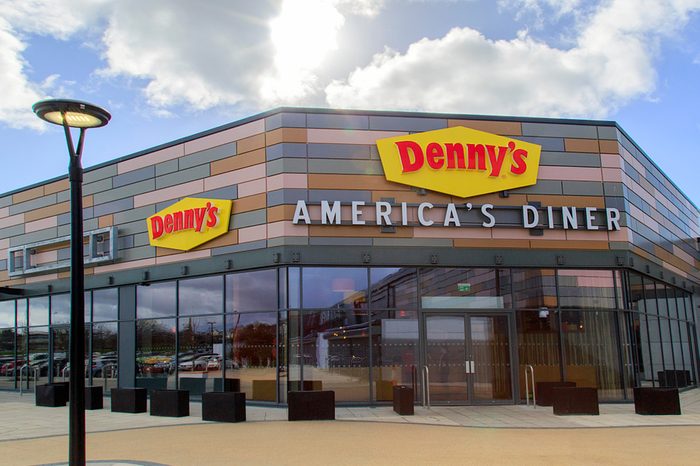
16 Restaurants You Didn’t Know Changed Their Names

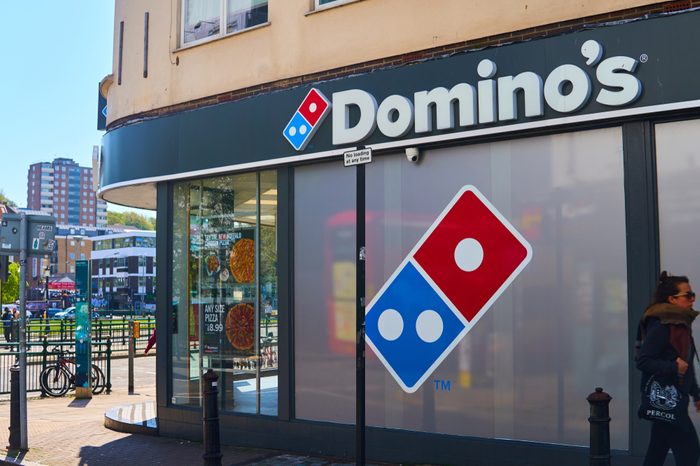
Domino’s
You’re not alone if you’ve never understood the connection between games and takeout. Long before Domino’s rebranded to expand beyond pizza, it was called DomiNick’s Pizza, after its owner, Dominick DiVarti. He sold the restaurant to some friends, but when they started expanding, DiVarti didn’t want his name on the new shops. So a pizza deliverer came up with an alternative: Domino’s.
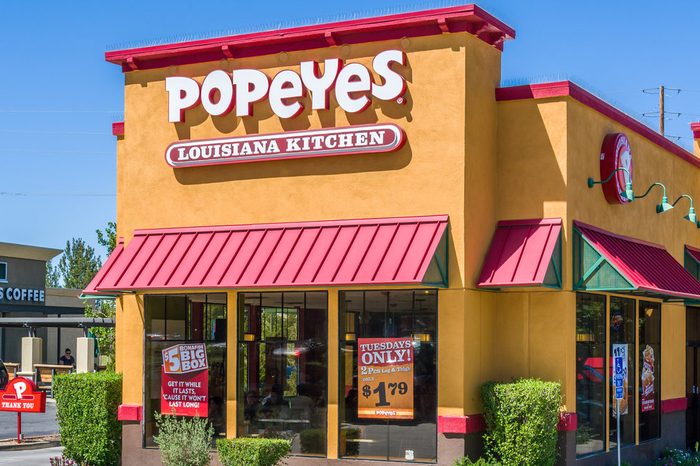
Popeyes Louisiana Kitchen
Apparently, customers were in no rush to get to a restaurant called Chicken on the Run. When the fried chicken spot struggled after its grand opening in 1972, the founder reopened it as Popeyes Chicken. The name wasn’t in reference to a spinach-loving sailor but to detective Jimmy “Popeye” Doyle from The French Connection.
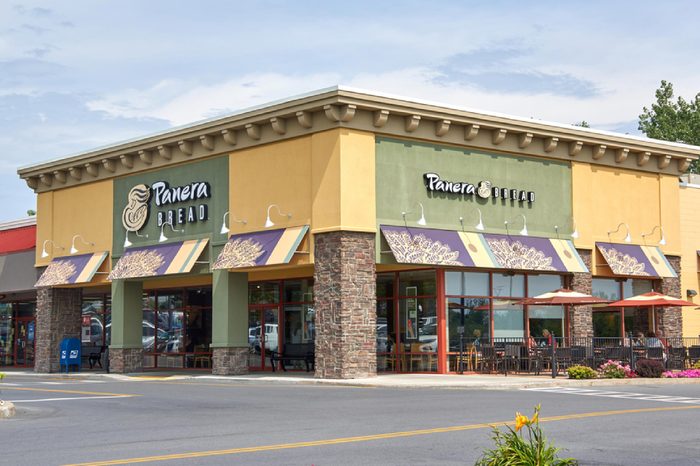
Panera Bread
Au Bon Pain was going strong in the early 1990s, but founder Ron Shaich wanted more. When the owners of Saint Louis Bread Company showed him their own bread-focused chain, Shaich was impressed and bought the 19 locations in hopes of hitting a suburban market. Realizing that St. Louis Bread Co. doesn’t have universal appeal, he made up a word that conjures images of breadbaskets: Panera. He later sold Au Bon Pain to focus on his new baby.
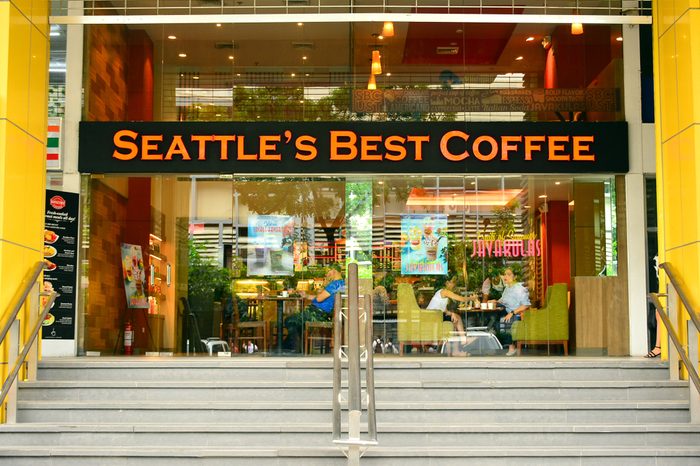
Seattle’s Best Coffee
Apparently Starbucks isn’t the only Seattle-based coffee chain that rethought its name. In the 1970s, Seattle dwellers looking for a caffeine fix might have headed to The Wet Whisker for coffee and ice cream. As you might imagine, the founder realized a new name would help him “compete in the market,” so he turned it into Stewart Brothers Coffee in the early 1980s. But that wasn’t the end of the story—Stewarts Private Blend Coffee all the way in Chicago caught wind of their shop and called them out for copyright issues. Stewart Brothers Coffee could keep its SBC logo, and fate would decide what the initials would end up standing for. SBC won a local competition for the best coffee in the city, and Seattle’s Best Coffee was (re)born.
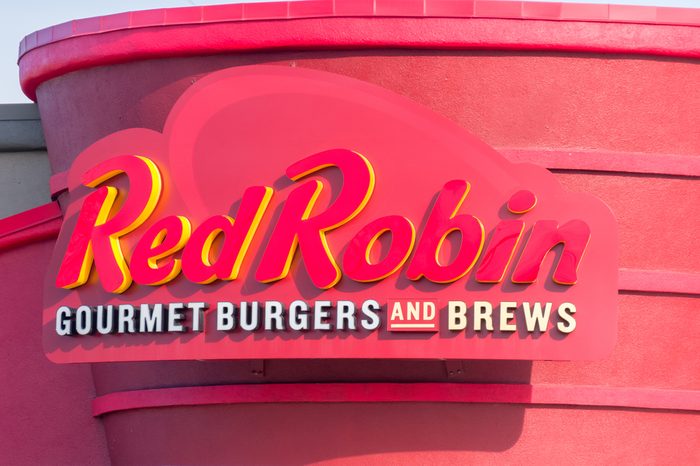
Red Robin
“Reeeed Robin … Yum!” isn’t the only song associated with the restaurant. When it opened in the 1940s, it was called Sam’s Tavern. The restaurant owner also happened to be a barbershop quartet singer, and one of his favorite ditties was “When the Red, Red Robin (Comes Bob, Bob, Bobbin’ Along).” He loved the song so much that he changed the name to Sam’s Red Robin. When another entrepreneur bought and franchised the restaurant, he shortened the name to just Red Robin.
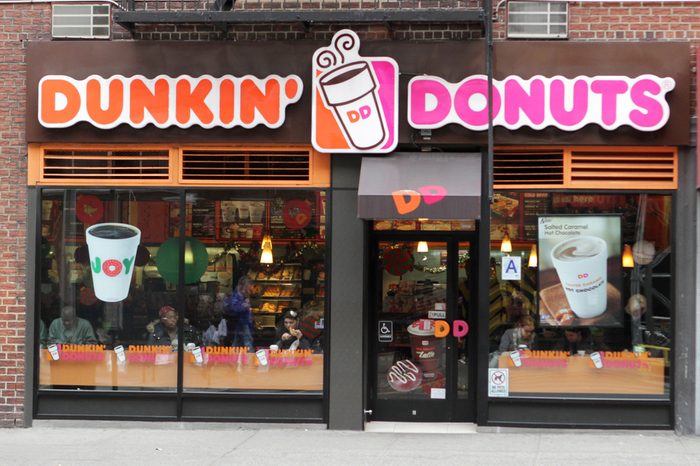
Dunkin Donuts
Dunkin’s original name, Open Kettle, didn’t conjure up images of doughnuts or coffee to dunk them in. (Can you imagine buying an Open Kettle Munchkins Bucket? Neither can we.) Two years after opening Open Kettle, the founder and his executives decided to switch the name to Dunkin Donuts, forever confusing us all about how to spell doughnut.
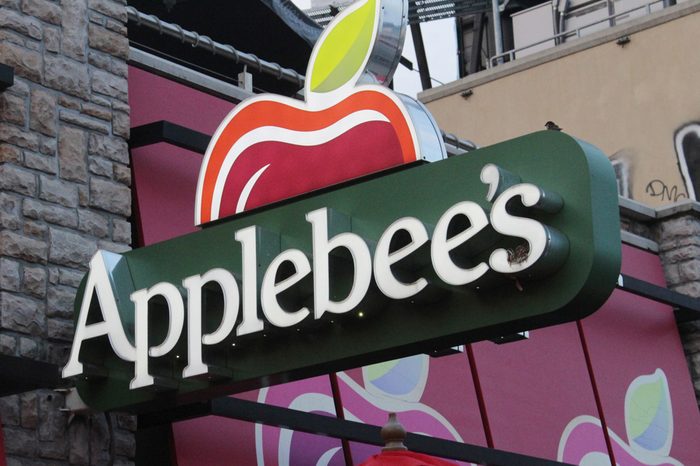
Applebee’s
Applebee’s wasn’t always just a place for half-price appetizers. When it opened in 1980, it was called T.J. Applebee’s Rx for Edibles & Elixirs. You can probably understand why it became Applebee’s Neighborhood Grill & Bar six years later.
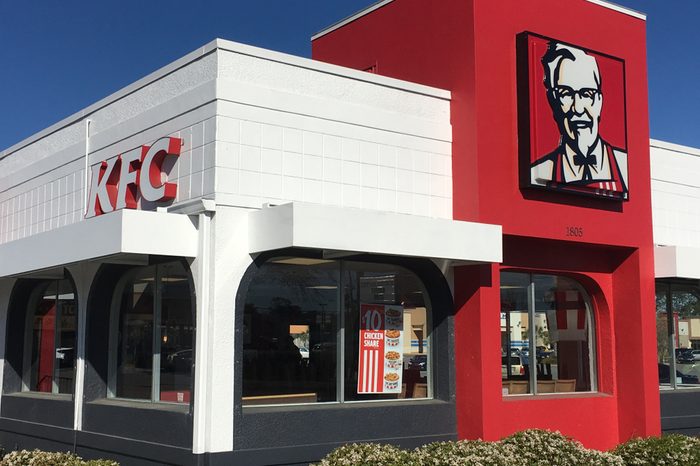
KFC
Calling the fast-food chain KFC isn’t just a short way of saying Kentucky Fried Chicken—it’s also the restaurant’s official name. In 1990, the state of Kentucky trademarked its name, meaning any companies with “Kentucky” in their name would have to change the name or pay the price (literally). Kentucky Fried Chicken skirted licensing fees by rebranding to KFC, then later trademarked Kentucky Fried Chicken in 2006 after reaching a settlement with the state.
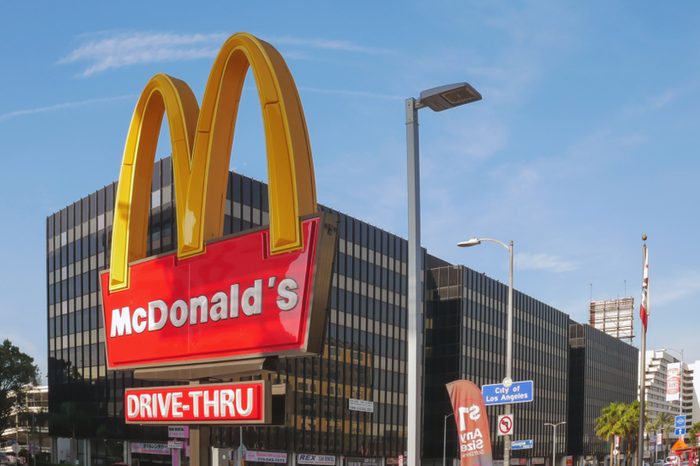
McDonald’s
When it comes to food chain names, McDonald’s is about the most recognizable. But the OG name and menu aren’t what you would expect. A McDonald’s burger probably seems a far cry from what you’d flip on your own backyard grill, but its first restaurant wasn’t the grab-and-go meal you get today. Dick and Mac McDonald first opened McDonald’s Bar-B-Q in California in 1940 as a drive-in with car hops and an extensive menu. Toward the end of the decade, they revamped, streamlined the menu, made it self-serve and simplified its name to McDonald’s.
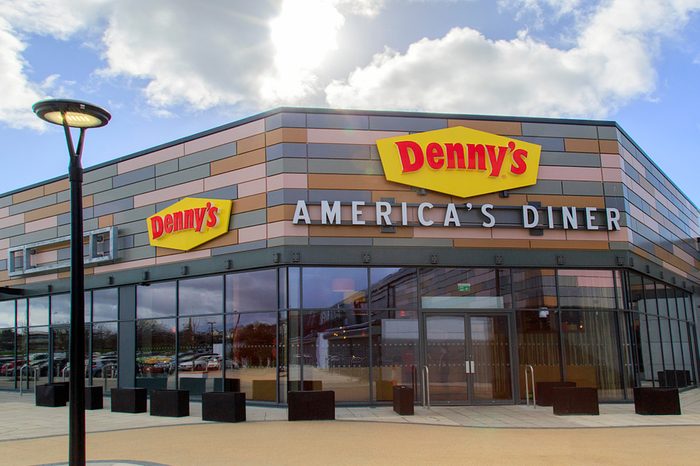
Denny’s
Spoiler alert: Denny isn’t a real person. The chain opened its first location in 1953 as Danny’s Donuts—not quite the Grand Slam-slinging diner you know today. When one of the two co-founders left a few years later, the other tweaked the concept to focus on coffee, turning it into Danny’s Coffee Shops and leaving the doors open 24 hours. But when customers started to confuse it with Coffee Dan’s in Los Angeles, the name was again changed to Denny’s Coffee Shops. By 1961, that became the short-and-sweet Denny’s.
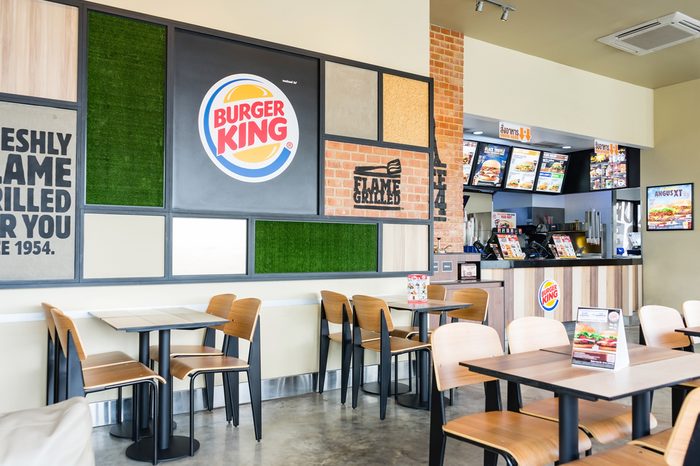
Burger King
Burger King doesn’t share a lot about its own history, but sources say it has its roots in a 1953 Florida restaurant called Insta-Burger King, which used an Insta-Broiler to cook the patties.
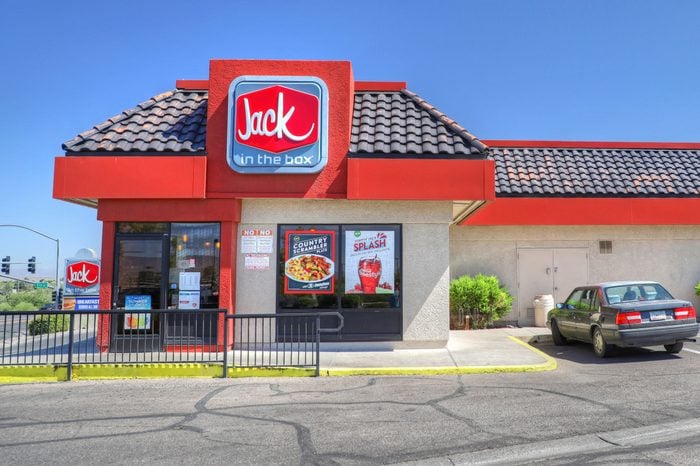
Jack in the Box
Before there was Jack in the Box, there was Topsy’s drive-in. Founder Oscar Peterson later tweaked the concept to a drive-through and changed the name to his own (Oscar’s), but eventually he had even bigger dreams. Drive-throughs already existed, but Peterson did something revolutionary by hooking up a two-way speaker to a plastic clown for his famous Jack in the Box franchise.
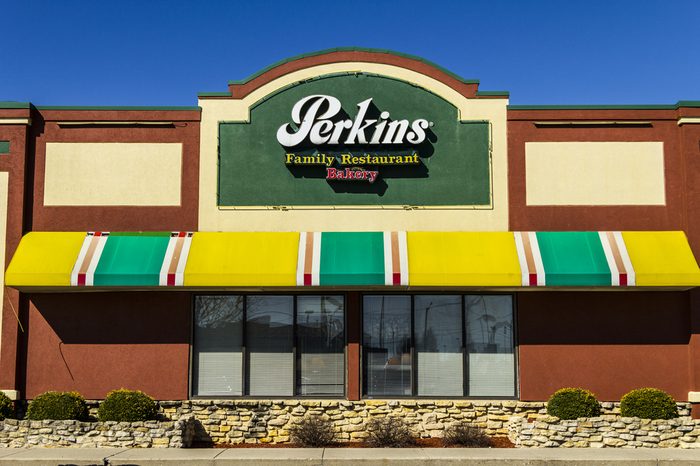
Perkins Restaurant & Bakery
The original Perkins in Cincinnati, Ohio, had one thing in mind: pancakes. It opened its doors in 1958 as Perkins Pancake House. But a “pancake house” name can be limiting. The franchise changed its name to Perkins Cake and Steak, hoping to highlight its other entrees. In the 1980s, it became Perkins Family Restaurant before later settling on Perkins Restaurant & Bakery. The more generic, the better, in Perkins’s case.
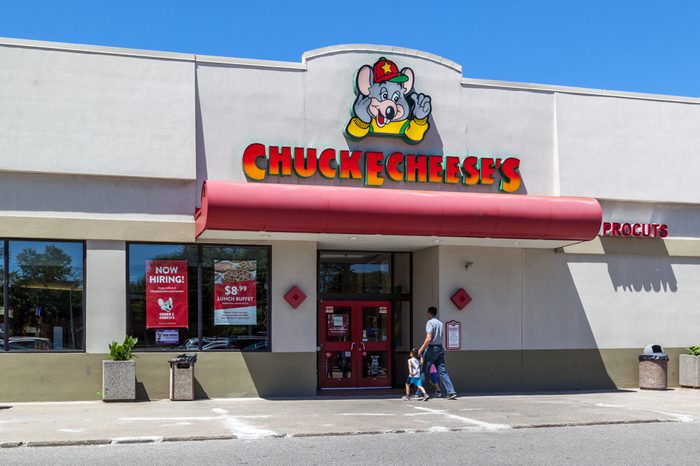
Chuck E. Cheese’s
At Chuck E. Cheese’s, you’d probably rather put your focus on Skee-Ball and pizza than the creepy robot band that’s finally being phased out. But in 1977, when the food-forward arcade opened, the animatrons were a focus, as reflected in the then-name: Chuck E. Cheese’s Pizza Time Theatre.
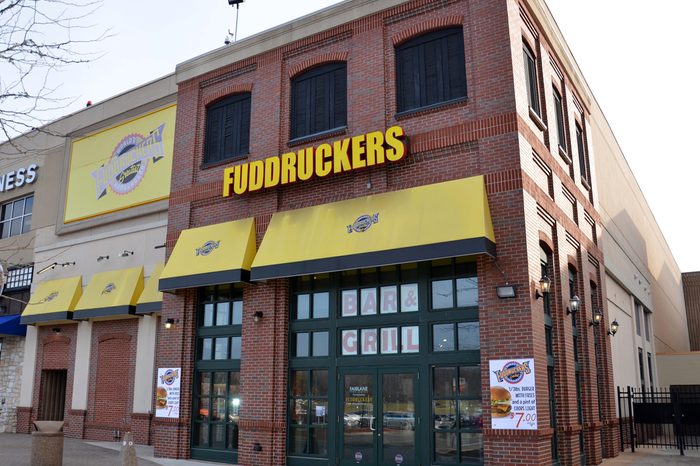
Fuddruckers
Saying “Fuddruckers” out loud is a sure way to spark a smile. The burger joint’s original name was just as odd but at least provided a bit of context: Freddie Fuddruckers. No word on why founder Philip J. Romano chose that name, but we won’t question it.
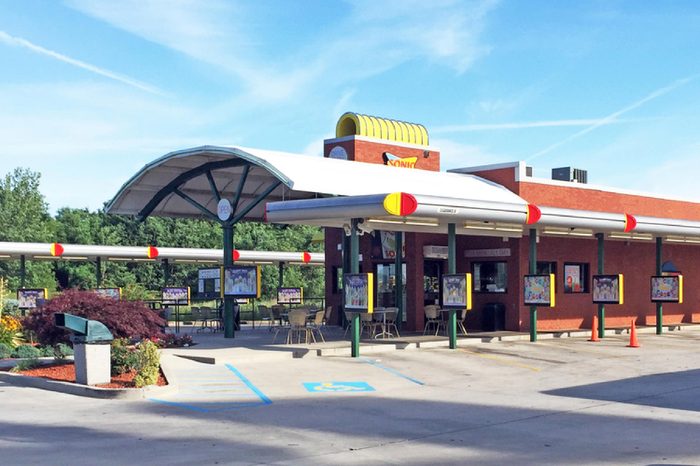
Sonic Drive-In
Early versions of Sonic in the 1950s were called Top Hat, but that name didn’t highlight the drive-in’s main feature: speakers that let customers order from their cars. Bragging about its “service at the speed of sound,” the quick-service joint rebranded as Sonic Drive-In in 1959.
Why trust us
At Reader’s Digest, we’re committed to producing high-quality content by writers with expertise and experience in their field in consultation with relevant, qualified experts. For this piece, Marissa Laliberte-Simonian drew on her years of experience as a journalist to determine the origin of popular restaurant chain names. We rely on reputable primary sources, including government and professional organizations and academic institutions as well as our writers’ personal experiences where appropriate. We verify all facts and data, back them with credible sourcing and revisit them over time to ensure they remain accurate and up to date. Read more about our team, our contributors and our editorial policies.
Sources:
- CNN: “Tom Monaghan Domino’s Pizza THE PIONEERING PIZZA-DELIVERY CHAIN I STARTED ALMOST DIDN’T MAKE IT OUT OF THE OVEN.”
- Popeyes: “Our Story”
- Washington Post: “When we were small: Panera Bread”
- Dunkin Donuts: “Dunkin Donuts History”
- Coffee Talk: “On the Shoulders of Giants”
- Applebee’s: “History of Applebee’s”
- McDonald’s: “McDonald’s History”
- Denny’s: “Company”
- Los Angeles Times: “Robert O. Peterson, Founder of Jack in the Box Restaurants, Dies”
- Perkins: “Our Story”
- New York Times: “Founder of Fuddruckers Goes On to Next Course”
- Sonic: “Our History”


















